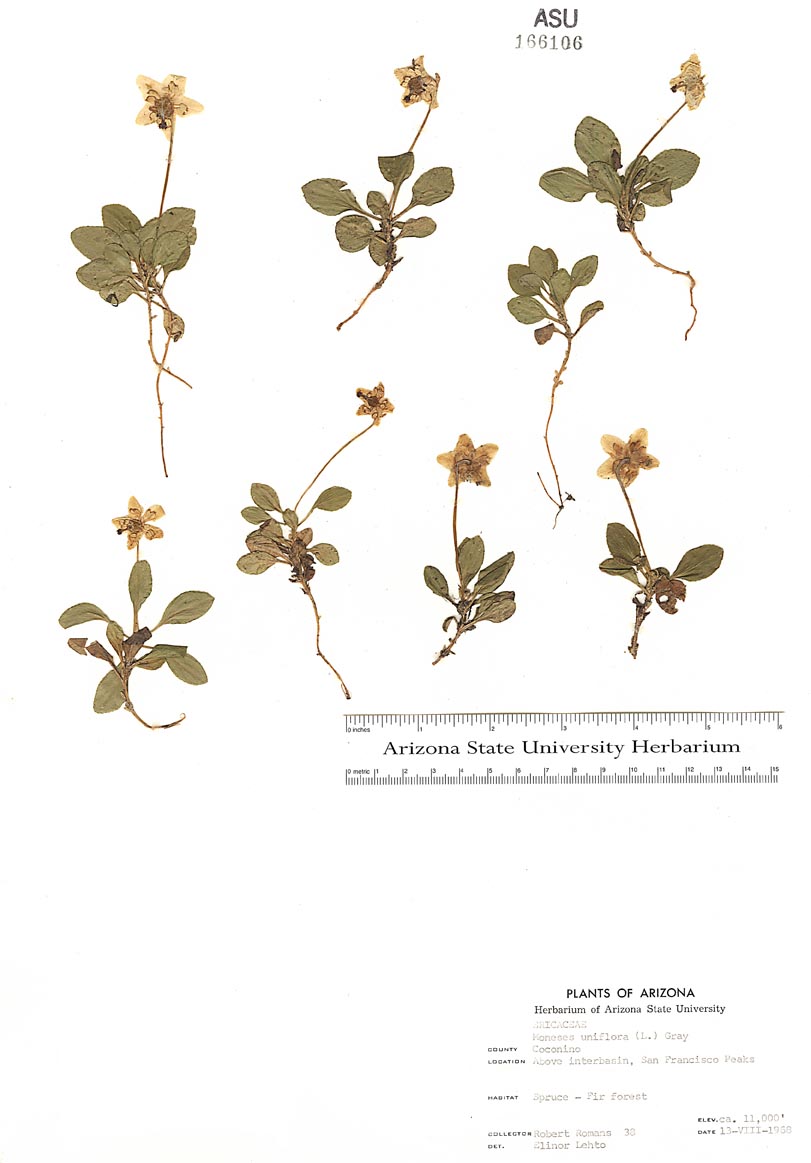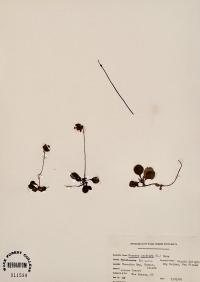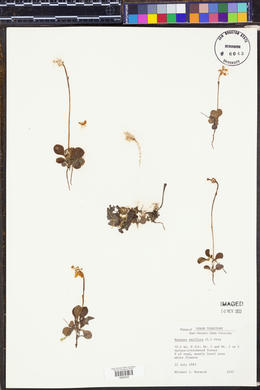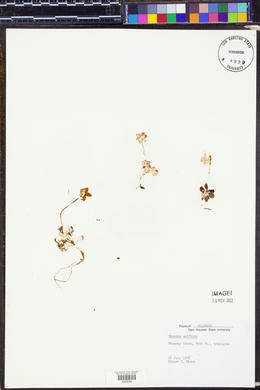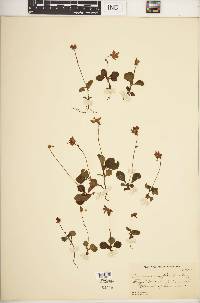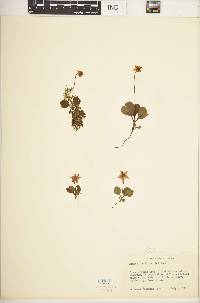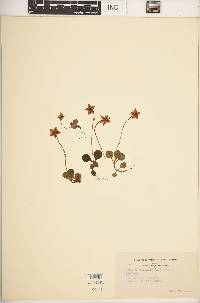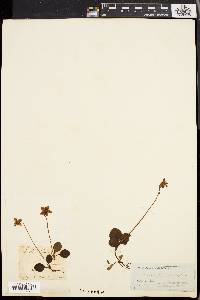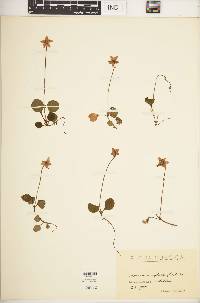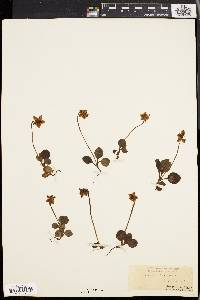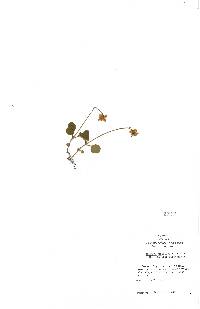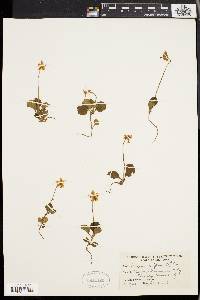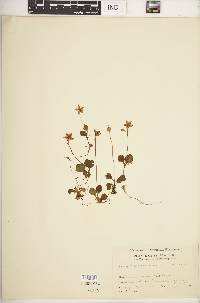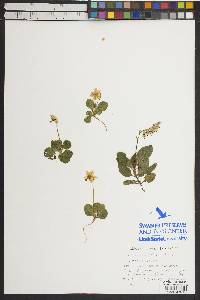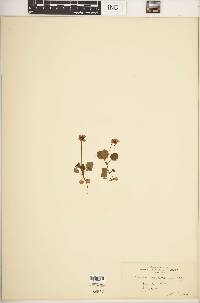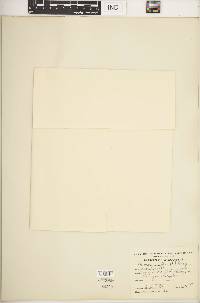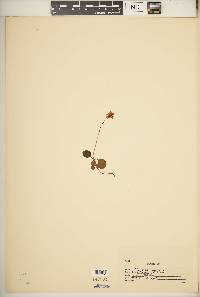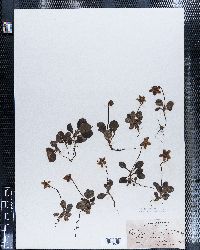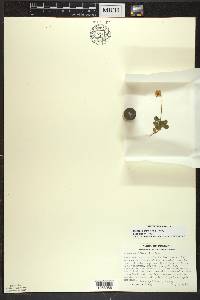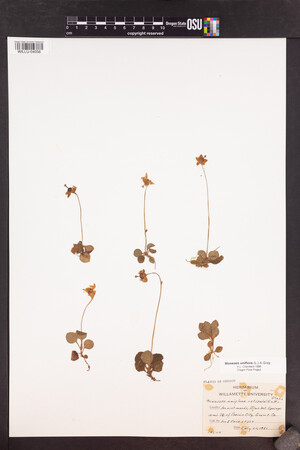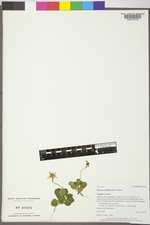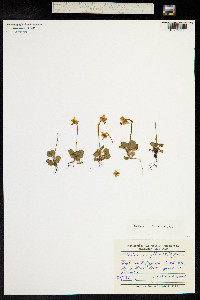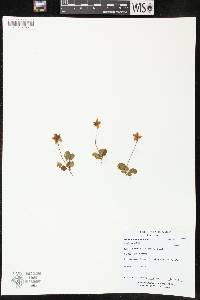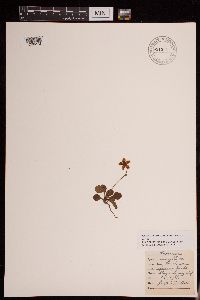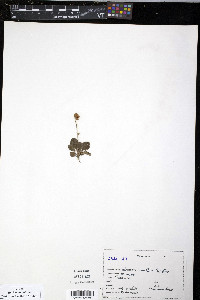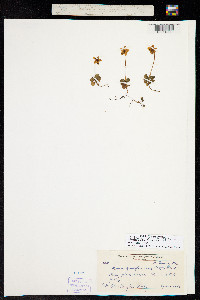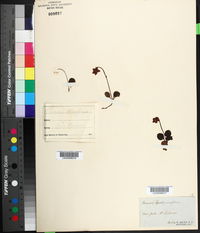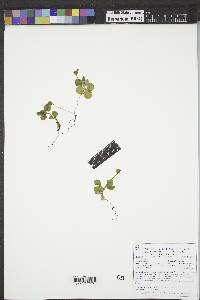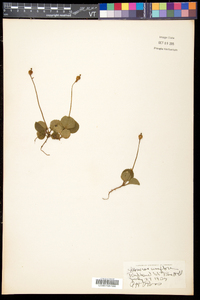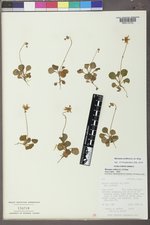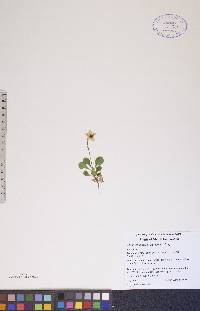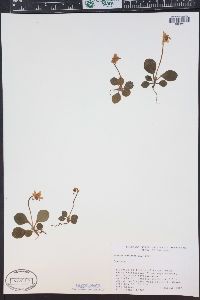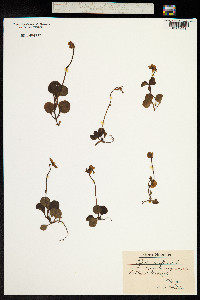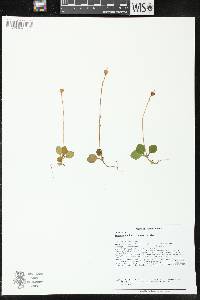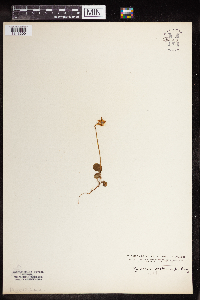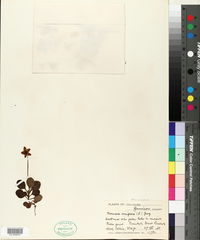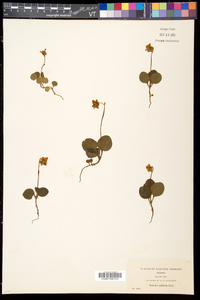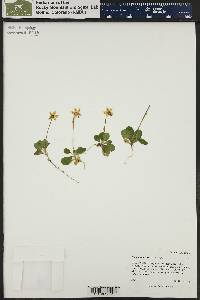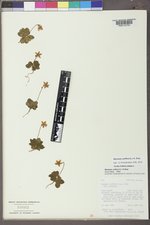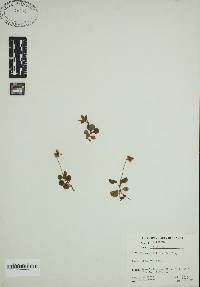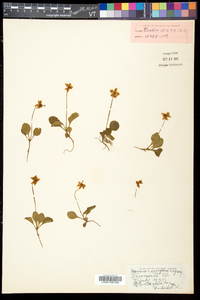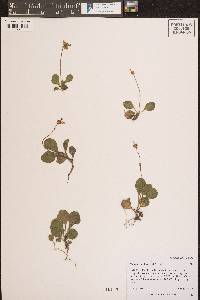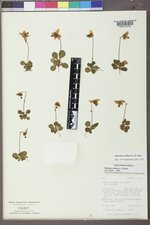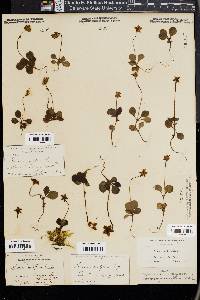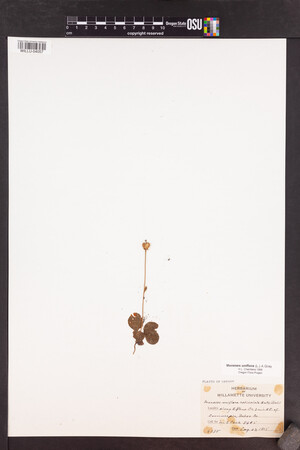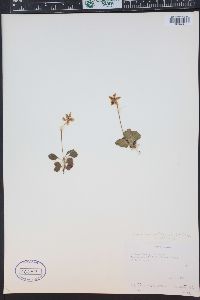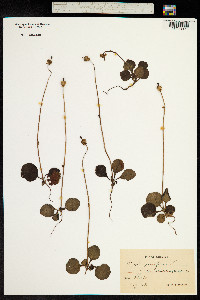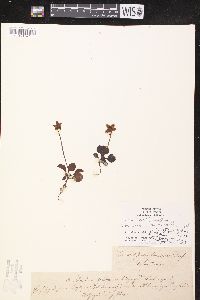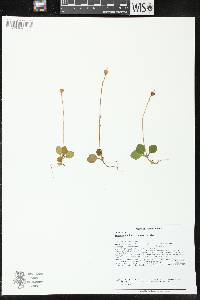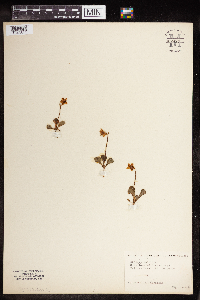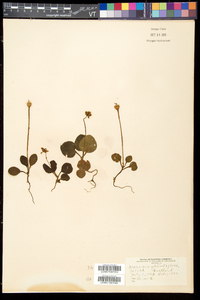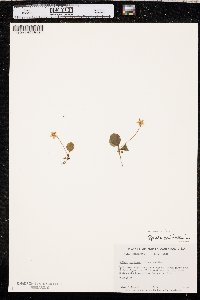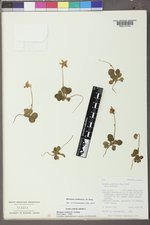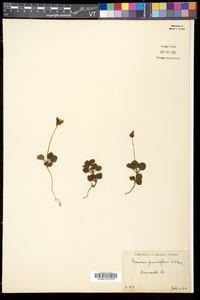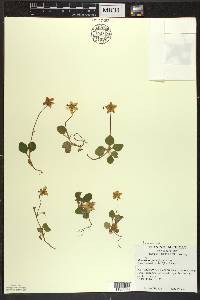Moneses uniflora
|
|
|
|
Family: Ericaceae
Single-Delight
[Moneses reticulata Nutt., moreMoneses uniflora subsp. reticulata (Nutt.) Calder & Taylor, Moneses uniflora subsp. uniflora (L.) A. Gray, Moneses uniflora var. reticulata (Nutt.) Blake, Moneses uniflora var. uniflora , Pyrola uniflora L.] |
Plants arising from horizontal roots, 0.3-3 dm. Leaves: petiole 5-20(-30) mm, channeled adaxially, glabrous; blade dull and light green abaxially, shiny and green adaxially, 6-22 × 5-20 mm, base rounded to obtuse, apex obtuse to rounded. Inflorescences: peduncle 3-15 cm; peduncular bracts absent or 1(-2), oblanceolate to elliptic or orbiculate, (2.5-)4-4.5 × (2-)2.7-3.4 mm, membranous, margins entire or obscurely erose-denticulate. Flowers: calyx lobes spreading or reflexed in fruit, green or green with margins whitish green, 2-2.5 × 1.5-2 mm, margins erose-denticulate, apex rounded to obtuse; petals ovate to broadly ovate, 8-12 × 4-8 mm, margins minutely denticulate; stamens 4-8 mm; filament base 0.4-0.8 mm wide; anthers 2.2-2.5 mm, thecae whitish yellow to tan or light brown, tubules golden brown to brown, 0.4-0.8 mm, abruptly narrowed from thecae, lateral walls not touching, pores 0.2-0.4 × 0.2-0.4 mm; ovary smooth; style 2-5 mm; stigma 1.4-3.5 mm wide, lobes erect. Capsules subglobose, 4-8 × 5-9 mm. 2n = 22, 24, 26, 32. Flowering Jun-Aug. Moist forests, bogs; 10-3500 m; St. Pierre and Miquelon; Alta., B.C., Man., N.B., Nfld. and Labr., N.W.T., N.S., Ont., P.E.I., Que., Sask., Yukon; Alaska, Ariz., Calif., Colo., Conn., Idaho, Maine, Mass., Mich., Minn., Mont., Nev., N.H., N.Mex., N.Y., Ohio, Oreg., R.I., S.Dak., Utah, Vt., Wash., Wis., Wyo.; Eurasia. Most chromosome counts are 2n = 26; there are reports of 2n = 22, 24, and 32 (Á. Löve and D. Löve 1975b). The veracity of the latter reports has not been confirmed. Moneses uniflora has been used by different Native American tribes as a dermatological aid, cold remedy, throat aid, and analgesic (D. E. Moerman 1998).
Plant: perennial scapose herb Leaves: in basal rosette; blades ovate, elliptic to obovate, 1-2.5 cm long; apex rounded; bases partly decurrent; teeth small, rounded; petiole generally shorter than blade Flowers: single, actinomorphic, drooping; sepals ovate, about 3 mm long, the apex rounded, the margins fringed; petals waxy-white to pinkish, widely spread, entire or minutely fringed, without basal tubercles on upper side; filaments tapered from base, glabrous; anthers with prominent tubes and pores, the sacs about 3 mm long; pollen in tetrads; style straight; stigmatic lobes 5, prominent and marginal Fruit: an erect globose capsule without fibers connecting the opened valves Misc: Coniferous forest; 2700-3500 m (8700-11,500 ft); Jul-Aug Notes: Scapes to 8 cm tall REFERENCES: Haber, Erich. 1992. Pyrolaceae. Ariz.-Nev. Acad. Sci. 26(1)2. General: Perennial, evergreen, 3-10 cm tall; stems erect, slender; herbage glabrous; roots slender, rhizome-like, creeping. Leaves: Cauline but basally disposed, opposite or in pseudo- whorls of 3, ovate to sub-orbicular, 0.6-2 cm long and about as wide, glabrous, margins finely toothed to nearly entire, apex rounded; petiole 5-10 mm long. Flowers: Inflorescence an umbel-like corymb, usually surpassing the leaves, glandular-puberulent; flowers 4-10, nodding, fragrant; pedicels 1-3 cm long, ascending in flower, becoming erect in fruit; bracts of the inflorescence linear-lanceolate, 2-7 mm long, often readily deciduous; sepals 5, connate at the base, broadly ovate, 2-3 mm long; petals 5, 5-8 mm long, white, pink, or rose-purple; anthers maroon; flowers June-August. Fruits: Loculicidal capsule, globose, 5-9 mm in diameter; seeds numerous, minute. Ecology: Coniferous forests, streambanks, shaded habitats; 2700- 3500 m (9000-11500 ft); Apache and Coconino counties; Canada, northeastern, north-central, western, and southwestern U.S. Notes: As the name implies, this diminutive plant bears a single flower on top of a naked (or sometimes one-bracted) stem. Editor: Springer et al. 2008 Plants 3-10 cm; lvs suborbicular, 1-2 cm, finely toothed or subentire; petioles 5-10 mm; fls fragrant, 12-20 mm wide; 2n=26. Damp woods and bogs; circumboreal, s. in Amer. to Conn., N.Y., Mich., Minn. and N.M. July, Aug. (Pyrola u.) Gleason, Henry A. & Cronquist, Arthur J. 1991. Manual of vascular plants of northeastern United States and adjacent Canada. lxxv + 910 pp. ©The New York Botanical Garden. All rights reserved. Used by permission. |

